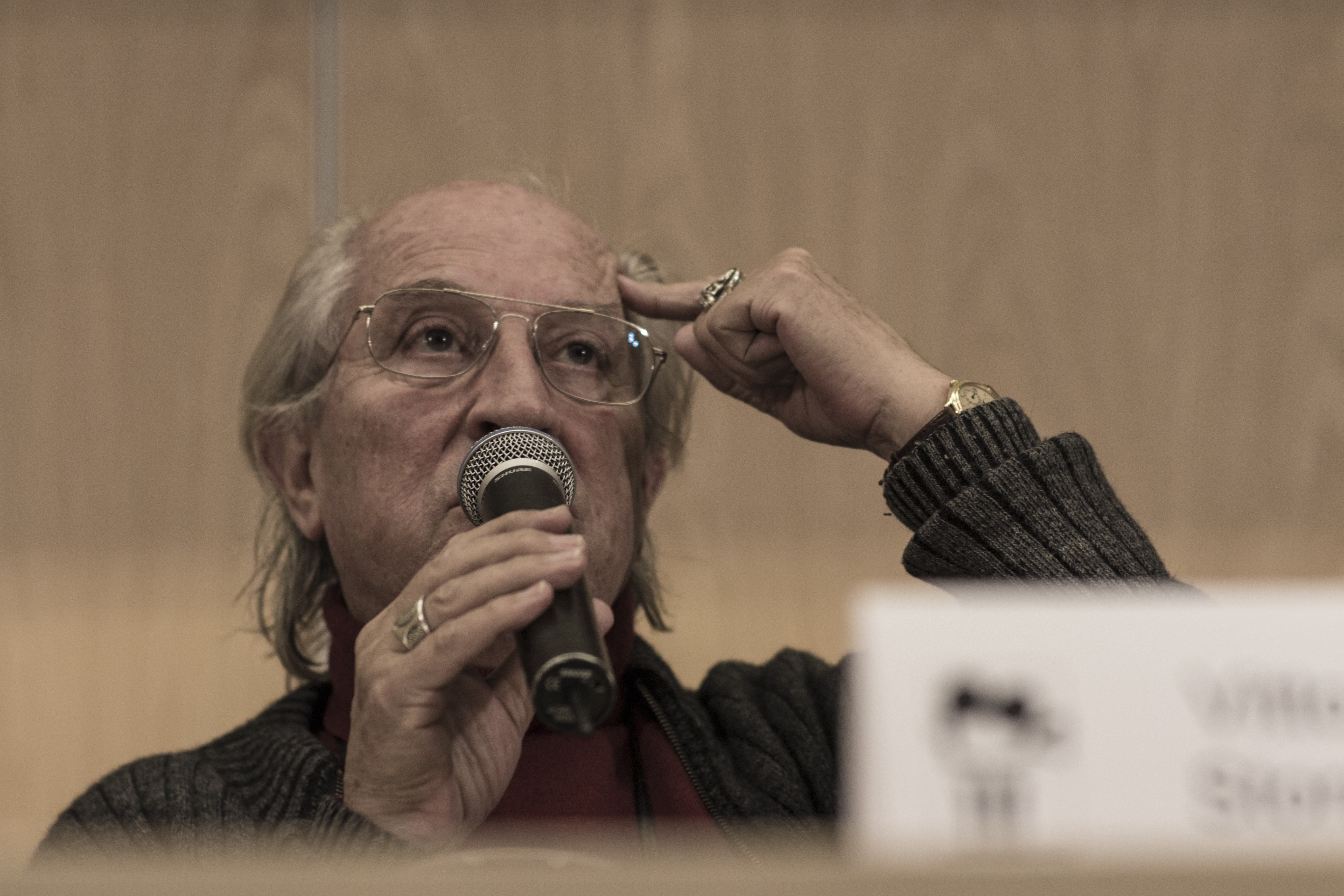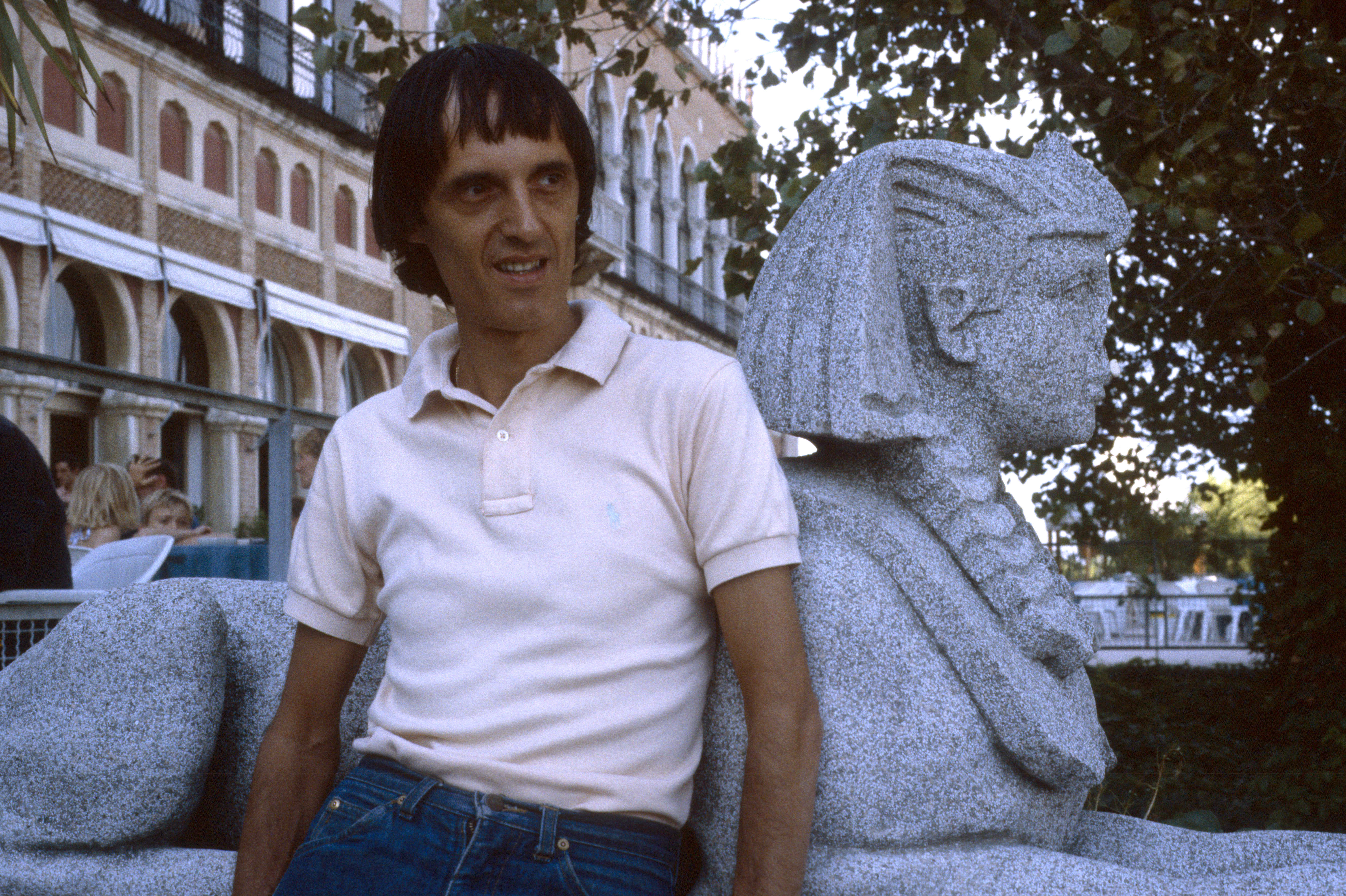|
Vittorio Storaro
Vittorio Storaro, A.S.C., A.I.C. (born 24 June 1940), is an Italian cinematographer widely recognized as one of the best and most influential in cinema history, for his work on numerous classic films including '' The Conformist'' (1970), ''Apocalypse Now'' (1979), and ''The Last Emperor'' (1987). In the course of over fifty years, he has collaborated with directors such as Bernardo Bertolucci, Francis Ford Coppola, Warren Beatty, Woody Allen, and Carlos Saura. He has received three Academy Awards for Best Cinematography for the films ''Apocalypse Now'', '' Reds'' (1981), and ''The Last Emperor'', and is one of three living persons who has won the award three times, the others being Robert Richardson and Emmanuel Lubezki. Early life Storaro was born in Rome. The son of a film projectionist, Storaro began studying photography at the age of 11. He went on to formal cinematography studies at the national Italian film school, Centro Sperimentale di Cinematografia, when he was 18 ... [...More Info...] [...Related Items...] OR: [Wikipedia] [Google] [Baidu] |
Centro Sperimentale Di Cinematografia
The (; CSC), also referred to as the (), is an Italian national film school headquartered in Rome, with satellite educational hubs in five other Italian regions. It was established in 1935 and aims to promote the art and technique of cinematography and film. History The center is the oldest film school in Western Europe. It was founded in Rome in 1935, during the Fascist era, by Benito Mussolini's head of cinema, Luigi Freddi, and his son, Vittorio Mussolini, as part of the Cinecittà Studios. He aimed to revive the Italian film industry, but he was also aware of the propaganda value of films. He created the slogan "''Il cinema è l'arma più forte''" ("cinema is the most powerful weapon"). During World War II, much of the original production equipment was stolen or destroyed by the Nazi occupiers. Many attempts to trace them in Germany and the Soviet Union after the war were unsuccessful. Directors such as Michelangelo Antonioni and Giuseppe De Santis attended the sc ... [...More Info...] [...Related Items...] OR: [Wikipedia] [Google] [Baidu] |
Woody Allen
Heywood Allen (born Allan Stewart Konigsberg; November 30, 1935) is an American filmmaker, actor, and comedian whose career spans more than six decades. Allen has received many List of awards and nominations received by Woody Allen, accolades, including the most nominations (16) for the Academy Award for Best Original Screenplay. He has won four Academy Awards, ten British Academy Film Awards, BAFTA Awards, two Golden Globe Awards and a Grammy Award, as well as nominations for a Primetime Emmy Award, Emmy Award and a Tony Award. Allen was awarded an Golden Lion, Honorary Golden Lion in 1995, the BAFTA Fellowship in 1997, an Palme d'Or, Honorary Palme d'Or in 2002, and the Golden Globe Cecil B. DeMille Award in 2014. Two of his films have been inducted into the National Film Registry by the Library of Congress. Allen began his career writing material for television in the 1950s, alongside Mel Brooks, Carl Reiner, Larry Gelbart, and Neil Simon. He also published several books o ... [...More Info...] [...Related Items...] OR: [Wikipedia] [Google] [Baidu] |
British Film Institute
The British Film Institute (BFI) is a film and television charitable organisation which promotes and preserves filmmaking and television in the United Kingdom. The BFI uses funds provided by the National Lottery to encourage film production, distribution, and education. It is sponsored by the Department for Culture, Media and Sport, and partially funded under the British Film Institute Act 1949. Activities Purpose The BFI was established in 1933 to encourage the development of the arts of film, television and the moving image throughout the United Kingdom, to promote their use as a record of contemporary life and manners, to promote education about film, television and the moving image generally, and their impact on society, to promote access to and appreciation of the widest possible range of British and world cinema and to establish, care for and develop collections reflecting the moving image history, heritage and culture of the United Kingdom. Archive The BFI maintain ... [...More Info...] [...Related Items...] OR: [Wikipedia] [Google] [Baidu] |
Dario Argento
Dario Argento (; born 7 September 1940) is an Italian film director, screenwriter and producer. His influential work in the horror film, horror and giallo genres during the 1970s and 1980s has led him to being referred to as the "Master of the Thrill" and the "Master of Horror". His films as director include his "Animal Trilogy", consisting of ''The Bird with the Crystal Plumage'' (1970), ''The Cat o' Nine Tails'' (1971) and ''Four Flies on Grey Velvet'' (1971); his "The Three Mothers, Three Mothers" trilogy, consisting of ''Suspiria'' (1977), ''Inferno (1980 film), Inferno'' (1980) and ''The Mother of Tears'' (2007); and his stand-alone films ''Deep Red'' (1975), ''Tenebrae (film), Tenebrae'' (1982), ''Phenomena (film), Phenomena'' (1985) and ''Opera (1987 film), Opera'' (1987). He co-wrote the screenplay for Sergio Leone's ''Once Upon a Time in the West'' (1968) and served as George A. Romero's script consultant on ''Dawn of the Dead (1978 film), Dawn of the Dead'' (1978), for ... [...More Info...] [...Related Items...] OR: [Wikipedia] [Google] [Baidu] |
American Cinematographer
The American Society of Cinematographers (ASC), founded in Hollywood in 1919, is a cultural, educational, and professional organization that is neither a labor union nor a guild. The society was organized to advance the science and art of cinematography and gather a wide range of cinematographers to discuss techniques and ideas and to advocate for motion pictures as a type of art form. Currently, the president of the ASC is Shelly Johnson. Members use the post-nominal letters "ASC". On the 1920 film titled ''Sand'', cinematographer Joseph H. August, who was an original member of the ASC, became the first individual to have the "ASC" appear after his name on the onscreen credit. Only cinematographers and special effect supervisors can become an ASC member. Basic requirements include being a director of photography for a minimum five out of the last eight years, having a high professional reputation and being recommended by three active or retired ASC members. History In t ... [...More Info...] [...Related Items...] OR: [Wikipedia] [Google] [Baidu] |
Theory Of Colours
''Theory of Colours'' () is a book by Johann Wolfgang von Goethe about the poet's views on the nature of colours and how they are perceived by humans. It was published in German in 1810 and in English in 1840. The book contains detailed descriptions of phenomena such as Complementary colours, coloured shadows, refraction, and chromatic aberration. The book is a successor to two short essays titled "Contributions to Optics" (). The work originated in Goethe's occupation with painting and primarily had its influence in the arts, with painters such as (Philipp Otto Runge, J. M. W. Turner, the Pre-Raphaelites, Hilma af Klint, and Wassily Kandinsky). Although Goethe's work was rejected by some physicists, a number of philosophers and physicists have concerned themselves with it, including Thomas Johann Seebeck, Arthur Schopenhauer (see: ''On Vision and Colors''), Hermann von Helmholtz, Ludwig Wittgenstein, Werner Heisenberg, Kurt Gödel, and Mitchell Feigenbaum. ... [...More Info...] [...Related Items...] OR: [Wikipedia] [Google] [Baidu] |
Johann Wolfgang Von Goethe
Johann Wolfgang (von) Goethe (28 August 1749 – 22 March 1832) was a German polymath who is widely regarded as the most influential writer in the German language. His work has had a wide-ranging influence on Western literature, literary, Political philosophy#European Enlightenment, political, and Western philosophy, philosophical thought in the Western world from the late 18th century to the present.. A poet, playwright, novelist, scientist, statesman, theatre-director, and critic, Johann Wolfgang von Goethe bibliography, his works include plays, poetry and aesthetic criticism, as well as treatises on botany, anatomy, and colour. Goethe took up residence in Weimar in 1775 following the success of his first novel, ''The Sorrows of Young Werther'' (1774), and joined a thriving intellectual and cultural environment under the patronage of Duchess Anna Amalia of Brunswick-Wolfenbüttel, Duchess Anna Amalia that formed the basis of Weimar Classicism. He was ennobled by Karl August, G ... [...More Info...] [...Related Items...] OR: [Wikipedia] [Google] [Baidu] |
The Guardian
''The Guardian'' is a British daily newspaper. It was founded in Manchester in 1821 as ''The Manchester Guardian'' and changed its name in 1959, followed by a move to London. Along with its sister paper, ''The Guardian Weekly'', ''The Guardian'' is part of the Guardian Media Group, owned by the Scott Trust Limited. The trust was created in 1936 to "secure the financial and editorial independence of ''The Guardian'' in perpetuity and to safeguard the journalistic freedom and liberal values of ''The Guardian'' free from commercial or political interference". The trust was converted into a limited company in 2008, with a constitution written so as to maintain for ''The Guardian'' the same protections as were built into the structure of the Scott Trust by its creators. Profits are reinvested in its journalism rather than distributed to owners or shareholders. It is considered a newspaper of record in the UK. The editor-in-chief Katharine Viner succeeded Alan Rusbridger in 2015. S ... [...More Info...] [...Related Items...] OR: [Wikipedia] [Google] [Baidu] |
The Hollywood Reporter
''The Hollywood Reporter'' (''THR'') is an American digital and print magazine which focuses on the Cinema of the United States, Hollywood film industry, film, television, and entertainment industries. It was founded in 1930 as a daily trade paper, and in 2010 switched to a weekly Wide-format printer, large-format print magazine with a revamped website. As of 2020, the day-to-day operations of the company are handled by Penske Media Corporation through a joint venture with Eldridge Industries. The magazine also sponsors and hosts major industry events. History Foundation and early years ''The Hollywood Reporter'' was founded in 1930 by William R. Wilkerson, William R. "Billy" Wilkerson (1890–1962) as Hollywood's first daily entertainment trade newspaper. The first edition appeared on September 3, 1930, and featured Wilkerson's front-page "Tradeviews" column, which became influential. The newspaper appeared Monday-to-Saturday for the first 10 years, except for a brief period, t ... [...More Info...] [...Related Items...] OR: [Wikipedia] [Google] [Baidu] |
Cinematography
Cinematography () is the art of motion picture (and more recently, electronic video camera) photography. Cinematographers use a lens (optics), lens to focus reflected light from objects into a real image that is transferred to some image sensor or Photographic film, light-sensitive material inside the movie camera. These Exposure (photography), exposures are created sequentially and preserved for later processing and viewing as a motion picture. Capturing images with an electronic image sensor produces an Charge-coupled device, electrical charge for each pixel in the image, which is Video processing, electronically processed and stored in a video file for subsequent processing or display. Images captured with photographic emulsion result in a series of invisible latent images on the film stock, which are chemically "Photographic developer, developed" into a Positive (photography), visible image. The images on the film stock are Movie projector, projected for viewing in the sam ... [...More Info...] [...Related Items...] OR: [Wikipedia] [Google] [Baidu] |
Vittorio Storaro Camerimage
Vittorio is an Italian male given name which has roots from the Latin name Victor. People with the given name Vittorio include: * Vittorio Emanuele, Prince of Naples, pretender to the former Kingdom of Italy * Vittorio Adorni, professional road racing cyclist * Vittorio Alfieri, dramatist and poet * Vittorio Amandola (1952–2010), Italian actor and voice actor * Vittorio De Angelis (1962–2015), Italian voice actor * Vittorio Brambilla (1937–2001) Italian Formula One racing driver * Vittorio Caprioli, actor, director and screenwriter * Vittorio Cecchi Gori (born 1942), Italian film producer and politician * Vittorio Cini (1885–1977), Italian industrialist and politician * Vittorio Cottafavi, director and screenwriter * Vittorio Gallinari, basketball player * Vittorio Gassman (1922–2000), Italian actor and director * Vittorio Giannini, neoromantic composer of operas * Vittorio Guerrieri, Italian voice actor * Vittorio Giardino, comic artist * Vittorio Goretti, astronome ... [...More Info...] [...Related Items...] OR: [Wikipedia] [Google] [Baidu] |
Emmanuel Lubezki
Emmanuel Lubezki Morgenstern (; born November 30, 1964) is a Mexican cinematographer. Lubezki is known for uses of natural lighting and continuous uninterrupted shots in cinematography, often utilizing a Steadicam, a 3-axis gimbal, or hand-held camera. He is also known for his frequent collaborations with Terrence Malick, Alfonso Cuarón, and Alejandro González Iñárritu. He has received numerous accolades including three consecutive wins for the Academy Award for Best Cinematography for the science fiction thriller ''Gravity'' (2013), the dark comedy '' Birdman'' (2014), and the epic western '' The Revenant'' (2015). He was Oscar-nominated for his work on '' A Little Princess'' (1995), '' Sleepy Hollow'' (1999), '' The New World'' (2005), '' Children of Men'' (2006), and '' The Tree of Life'' (2011). Lubezki is a member of both the Mexican Society of Cinematographers and the American Society of Cinematographers. Lubezki won the Royal Photographic Society Lumière ... [...More Info...] [...Related Items...] OR: [Wikipedia] [Google] [Baidu] |





